"A Christmas Carol" At South Coast Repertory Theater 2010

Scrooge and Bob Cratchit illustrated by John Leech in 1843
Ebenezer Scrooge is the principal character in Charles Dickens' 1843 novel, A Christmas Carol. At the beginning of the novel, Scrooge is a cold-hearted, tight-fisted and greedy man, who despises Christmas and all things which engender happiness. Dickens describes him thus: "The cold within him froze his old features, nipped his pointed nose, made his eyes red, his thin lips blue, and he spoke out shrewdly in his grating voice ..." His last name has come into the English language as a byword for miserliness and misanthropy, traits displayed by Scrooge in the exaggerated manner for which Dickens is well-known. The tale of his redemption by the three Ghosts of Christmas (Ghost of Christmas Past, Ghost of Christmas Present, and Ghost of Christmas Yet to Come) has become a defining tale of the Christmas holiday. Scrooge's catchphrase, "Bah, humbug!" is often used to express disgust with many of the modern Christmas traditions.
Our traditions continue with Greg Leach, the Duda's, the Kuhn's and a new addition... Hannah! Family is wonderful this time of year! We were also with Del and Vicky and Miranda with her family Irene, Vitti, and Idsel.
To The Theater!

The colors were magnificent

Did you know? - Yellow is the color evoked by light that stimulates both the L and M (long and medium wavelength) cone cells of the retina about equally, with no significant stimulation of the S (short-wavelength) cone cells. Light with a wavelength of 570–580 nm is yellow, as is light with a suitable mixture of red and green. Yellow's traditional RYB complementary color is purple, violet, or indigo, while its colorimetrically defined complementary color in both RGB and CMYK color spaces is blue.
The word yellow comes from the Old English geolu, or geolwe which derived from the Proto-Germanic word gelwaz. The oldest known use of this word in English is in the Old English poem Beowulf, in a description of a shield made of wood from a yew tree. In the English language, yellow has traditionally been associated with jaundice and cowardice. Yellow is associated with the word "caution" and is the second light on stop lights; in American slang, a coward can be said to be "yellowbellied" or "yellow". The color is associated with aging as well, for both people and objects (e.g. "yellowed" paper). Ethnographically, the term "yellow" has been used as a slang term for both Asians ("yellow peril") and, in the early 20th century, light-skinned African-Americans (High yellow). ~ Wikipedia



Idsel, Miranda, Vitti, and Irene join the party!

Auntie and nice Niece Miranda

The Gang Of Five

Oops!

Sue and Hannah enjoy a small libation before the play begins
Remember: "External heat and cold had little influence on Scrooge. No warmth could warm, no wintry weather chill him. No wind that blew was bitterer than he, no falling snow was more intent upon its purpose, no pelting rain less open to entreaty." - A Christmas Carol, Charles Dickens

Hannah forgot to wear red!

We are ready to see the play!

Ed is our extremely liberal bartender... I always smell our drinks first!
Remember: "Darkness is cheap, and Scrooge liked it." - A Christmas Carol, Charles Dickens

Greg and some of his friends

We had the entire row with Vicky on one end and Paul on the other
Remember: "You may be an undigested bit of beef, a blot of mustard, a crumb of cheese, a fragment of underdone potato. There's more of gravy than of grave about you, whatever you are!" - A Christmas Carol, Charles Dickens
The Play Begins (No Photography Allowed)

Remember: "Ghost of the Future," he exclaimed, "I fear you more than any spectre I have seen. But as
I know your purpose is to do me good, and as I hope to live to be another man from what I was, I am prepared to bear you
company, and do it with a thankful heart. Will you not speak to me?"
- A Christmas Carol, Charles Dickens
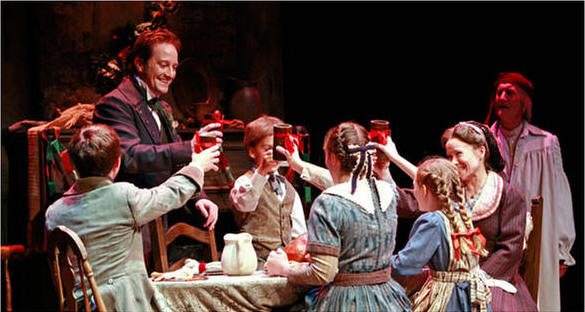
Remember: "Lead on!" said Scrooge. "Lead on! The night is waning fast, and it is precious time to me, I know. Lead on, Spirit!" - A Christmas Carol, Charles Dickens
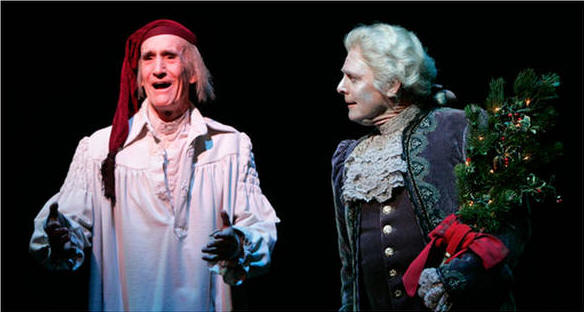
Remember: "I am the Ghost of Christmas Present," said the Spirit. "Look upon me!" - A Christmas Carol, Charles Dickens
Off To The Claim Jumper

The ladies know how to make an entrance

Greg and Hannah

They heard the rumors of large chocolate cake for desert!

Greg just popped into the picture
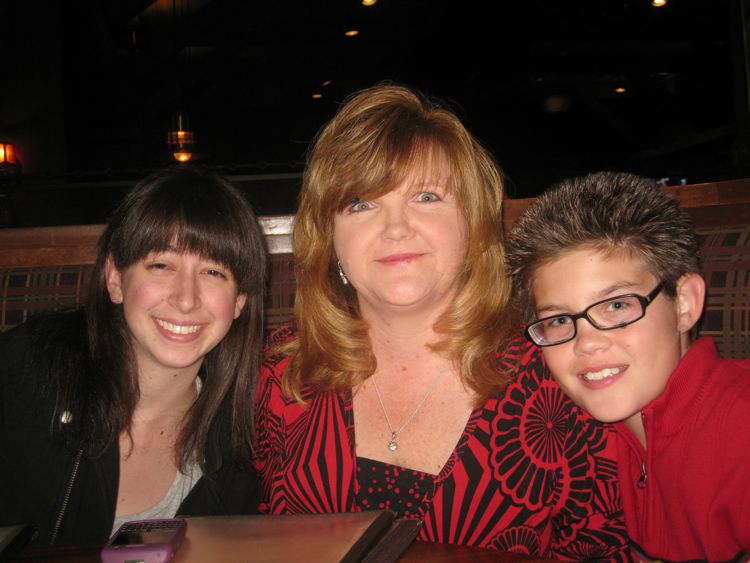
Hannah, Robin, and Nick
Remember: He who has not Christmas in his heart will never find it under a tree. ~Roy L. Smith

Matching!

Our wonderful friends and neighbors

Miranda and Irene

Vitti and Idsel

Greg loves to pop into the pictures
Remember: The best of all gifts around any Christmas tree: the presence of a happy family all wrapped up in each other. ~Burton Hillis

Robin is about to take a picture with her extremely bright flash camera

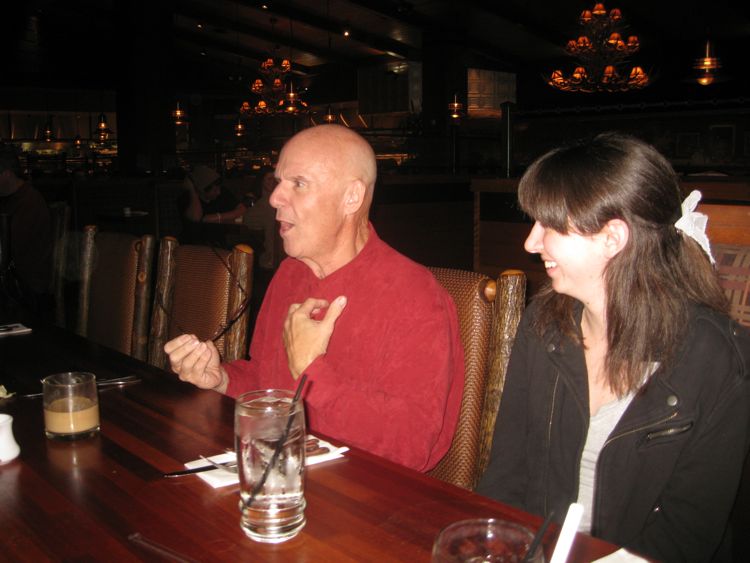
We turned Greg on and words of wisdom just flowed!
Remember: Happy, happy Christmas, that can win us back to the delusions of our childish days; that can recall to the old man the pleasures of his youth; that can transport the sailor and the traveler, thousands of miles away, back to his own fire-side and his quiet home! ~Charles Dickens, The Pickwick Papers, 1836

Oh oh... She is telling the story of the new airbag
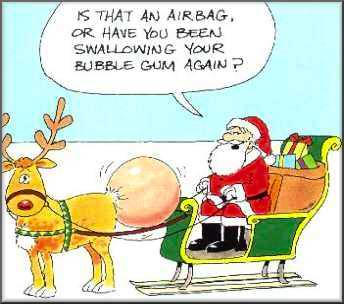

The girls just told Greg that they have been good all year!


"We ordered the one without calories.... just sugar and chocolate!"

Just oozing calories

"Nick, your desert s here but you can keep it in front of me if you like!"
Time To Head For Home


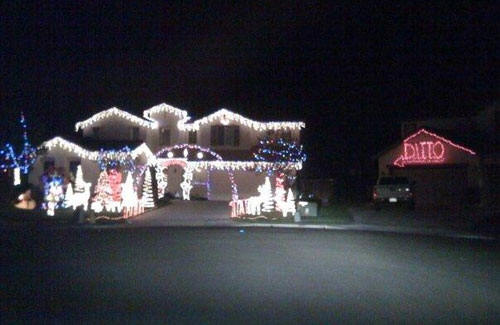
We arrive home (Vicky and Del are n the left.... Paul and Sue on the right!)
Alas... The Evening Is NOT Done

We went VFR to Garden Grove Elks

The tree tops were unusual!

Must study this!

Yup! We closed the place down!
The Day Is Done; Time For Eggnog

Did you know? - Eggnog, or egg nog, is a sweetened dairy-based beverage traditionally made with milk and/or cream, sugar, beaten eggs (which gives it a frothy texture), and liquor. Brandy, rum, or whiskey might be used; and the finished serving would be garnished with a sprinkling of ground cinnamon or nutmeg.

Really??
Eggnog is a popular drink throughout the United States and Canada, and is usually associated with winter celebrations such as Thanksgiving, Christmas, and New Year. Commercial non-alcoholic eggnog is typically available only in the winter season.
The origins, etymology, and the ingredients used to make the original eggnog drink are debated. Eggnog may have originated in East Anglia, England; or it may have simply developed from posset, a medieval European beverage made with hot milk. The "nog" part of its name may stem from the word "noggin", a Middle English term used to describe a small, carved wooden mug used to serve alcohol. However, the British drink was also called Egg Flip.
Another story is that the term derived from "egg and grog", a common Colonial term used for the drink made with rum. Eventually that term was shortened to "egg'n'grog", then "eggnog".
The ingredients for the drink were expensive in England, so there it was popular mainly among the aristocracy. "You have to remember, the average Londoner rarely saw a glass of milk," says author and historian James Humes (To Humes It May Concern, July 1997). "There was no refrigeration, and the farms belonged to the big estates. Those who could get milk and eggs to make eggnog mixed it with brandy or Madeira or even sherry."
The drink crossed the Atlantic to the English colonies during the 18th century. Since brandy and wine were heavily taxed, rum from the Triangular Trade with the Caribbean was a cost-effective substitute. The inexpensive liquor, coupled with plentiful farm and dairy products, helped the drink become very popular in America.[4] When the supply of rum to the newly-founded United States was reduced as a consequence of the American Revolutionary War, Americans turned to domestic whiskey, and eventually bourbon in particular, as a substitute.

